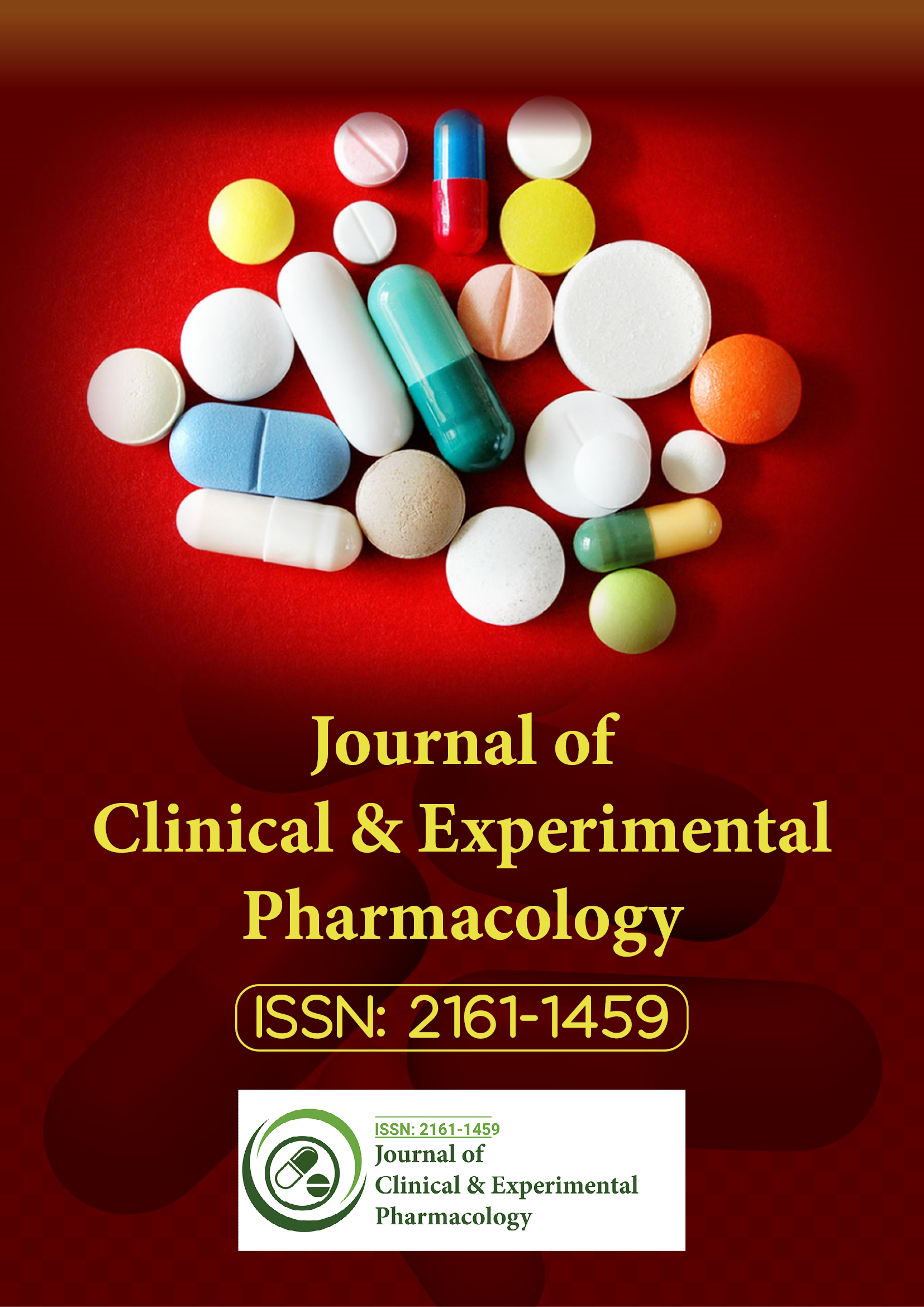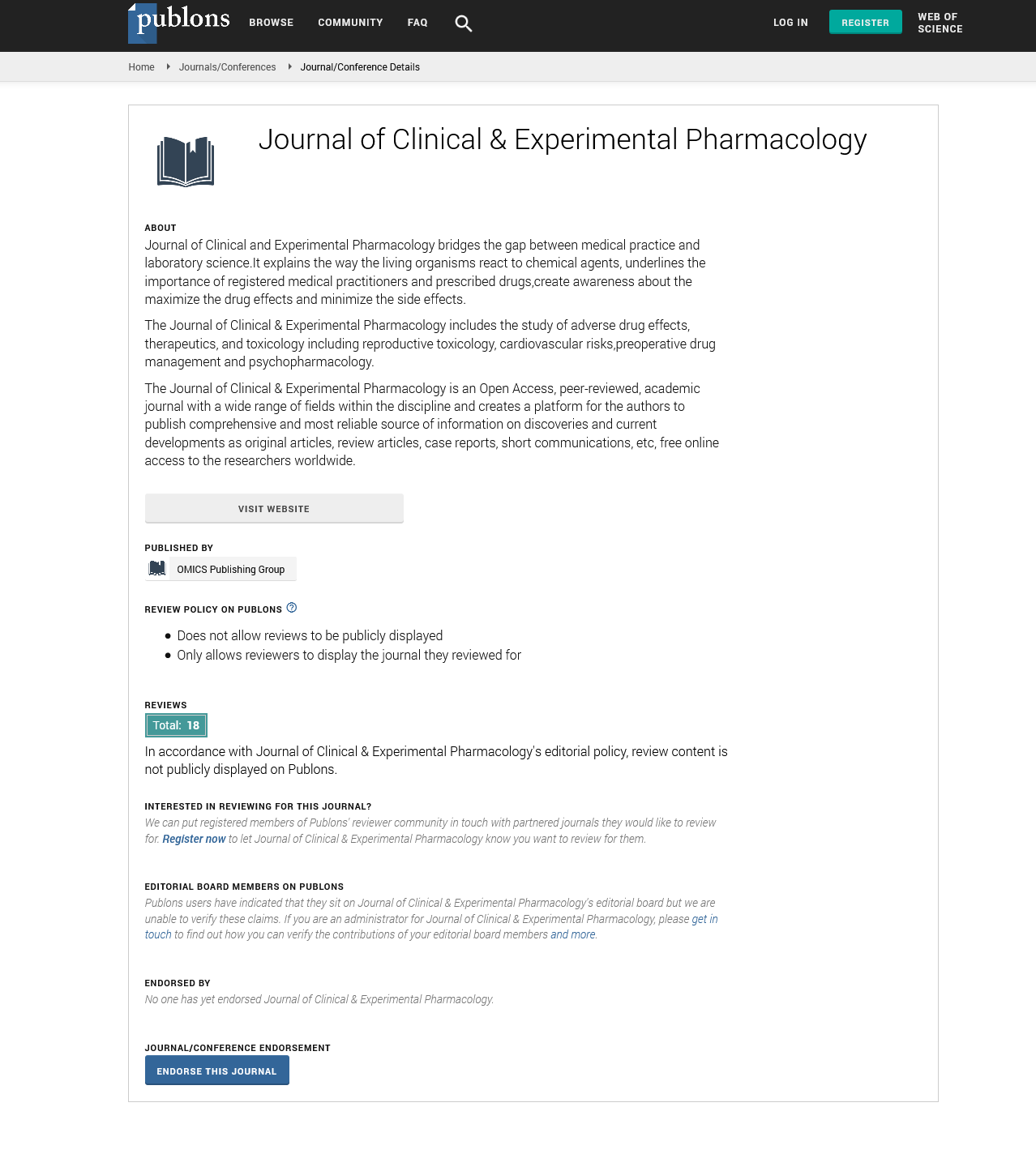Indexed In
- Open J Gate
- Genamics JournalSeek
- China National Knowledge Infrastructure (CNKI)
- Ulrich's Periodicals Directory
- RefSeek
- Hamdard University
- EBSCO A-Z
- OCLC- WorldCat
- Publons
- Google Scholar
Useful Links
Share This Page
Journal Flyer

Open Access Journals
- Agri and Aquaculture
- Biochemistry
- Bioinformatics & Systems Biology
- Business & Management
- Chemistry
- Clinical Sciences
- Engineering
- Food & Nutrition
- General Science
- Genetics & Molecular Biology
- Immunology & Microbiology
- Medical Sciences
- Neuroscience & Psychology
- Nursing & Health Care
- Pharmaceutical Sciences
Perspective - (2025) Volume 15, Issue 1
Managing Drug Interactions in Malaria-Endemic Regions: Addressing Comorbidities
Liya Novak*Received: 29-Jan-2025, Manuscript No. CPECR-25-28886; Editor assigned: 31-Jan-2025, Pre QC No. CPECR-25-28886 (PQ); Reviewed: 14-Feb-2025, QC No. CPECR-25-28886; Revised: 21-Feb-2025, Manuscript No. CPECR-25-28886 (R); Published: 28-Feb-2025, DOI: 10.35248/2161-1459.25.15.466
Description
The emergence of drug-resistant malaria has heightened the need for the development of novel antimalarial drugs. However, despite the critical importance of these new therapies, ensuring their safety for human use remains a fundamental challenge. Traditional clinical trials, although essential, often fail to identify certain safety concerns that may arise with the use of novel drugs, especially given the complex biology of malaria and the diverse population groups that are affected. This highlights the growing need for tailored non-clinical safety testing for antimalarial drugs. Such testing not only ensures that novel drugs are safe but also allows for a more precise and efficient evaluation process, ultimately leading to better clinical outcomes.
Non-clinical safety testing involves a variety of preclinical studies, such as in vitro and in vivo experiments, that are used to assess the toxicity, pharmacokinetics and pharmacodynamics of new drugs before they are tested in humans. For antimalarial drugs, tailored non-clinical safety testing is particularly important because malaria drugs are often used in populations that are particularly vulnerable, such as pregnant women, children and individuals with compromised immune systems. These subgroups may experience unique drug reactions that are not captured in standard clinical trial designs. As a result, tailoring non-clinical safety testing to reflect the specific pharmacological and physiological conditions in these groups is vital to ensure that these drugs are both safe and effective.
One fundamental reason for the necessity of tailored nonclinical safety testing is the variation in the pharmacokinetics and pharmacodynamics of antimalarial drugs across different populations. For example, pregnant women undergo significant physiological changes, including alterations in liver enzyme activity and renal function, which can affect how a drug is metabolized and cleared from the body. Tailoring non-clinical testing to account for these changes can help identify potential issues with drug metabolism or efficacy early in the development process. Similarly, individuals living in malaria-endemic regions may have unique immune system characteristics, influencing their response to treatment and the potential for adverse drug reactions.
Furthermore, the diverse pharmacological profiles of novel antimalarial drugs necessitate thorough testing to assess potential interactions with other medications commonly used in malaria-endemic regions. Malaria treatment is often administered alongside drugs for comorbidities like HIV, tuberculosis, or malnutrition, which are prevalent in many of the regions where malaria is endemic. Drug-drug interactions can lead to reduced efficacy, increased toxicity, or unexpected side effects. Customized non-clinical safety testing that incorporates the potential for drug interactions can help to identify such risks early, ensuring safer treatments for individuals with comorbidities.
In addition to pharmacokinetics and drug interactions, customized non-clinical safety testing is essential for assessing the potential for organ toxicity and long-term adverse effects. Malaria drugs often require prolonged treatment courses, particularly for chronic or resistant strains of the parasite. As a result, understanding the long-term safety profile of these drugs is critical. Drugs like artemisinin derivatives, for instance, have been associated with toxicity to the liver and heart, but these effects are often dose-dependent and may not be immediately apparent in short-term clinical trials. Non-clinical safety studies that mimic long-term use can help identify these risks and allow for dose adjustments or additional monitoring during clinical trials.
In conclusion, the development of novel antimalarial drugs is critical for combating the ongoing global malaria burden. However, ensuring the safety of these drugs, particularly in vulnerable populations and against drug-resistant strains, requires tailored non-clinical safety testing. By considering the unique pharmacological, physiological and genetic factors that influence drug response in different populations, researchers can identify potential risks and optimize treatment regimens. Customized safety testing not only improves the efficiency and effectiveness of drug development but also plays an important role in ensuring that these drugs can be safely used to save lives in malaria-endemic regions. As the field of antimalarial drug development continues to evolve, the importance of rigorous and customized safety testing will only grow, ensuring that these therapies meet the highest standards of safety and efficacy.
Citation: Novak L (2025). Managing Drug Interactions in Malaria-Endemic Regions: Addressing Comorbidities. J Clin Exp Pharmacol. 15:466.
Copyright: © 2025 Novak L. This is an open-access article distributed under the terms of the Creative Commons Attribution License, which permits unrestricted use, distribution and reproduction in any medium, provided the original author and source are credited.

